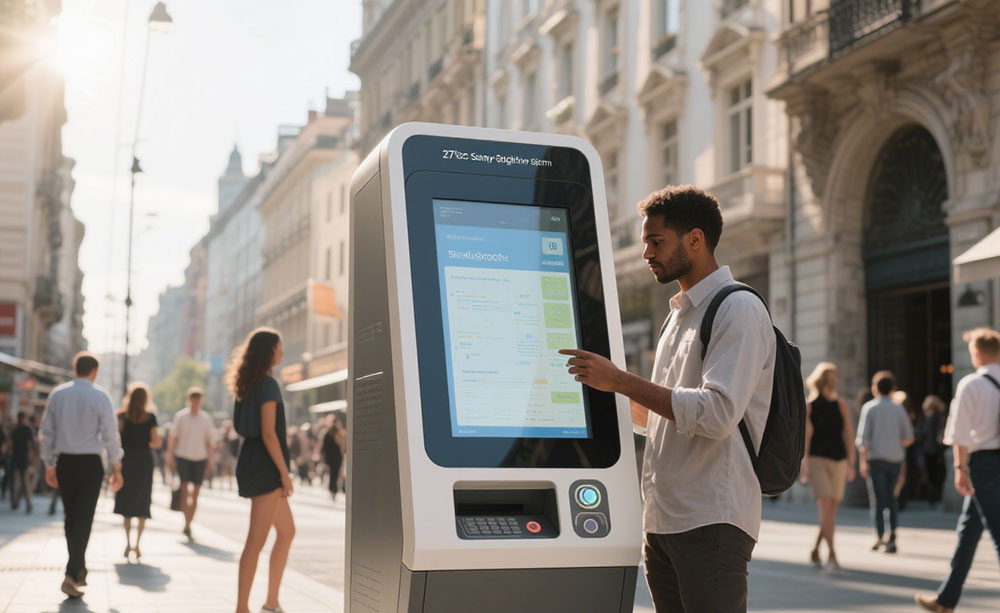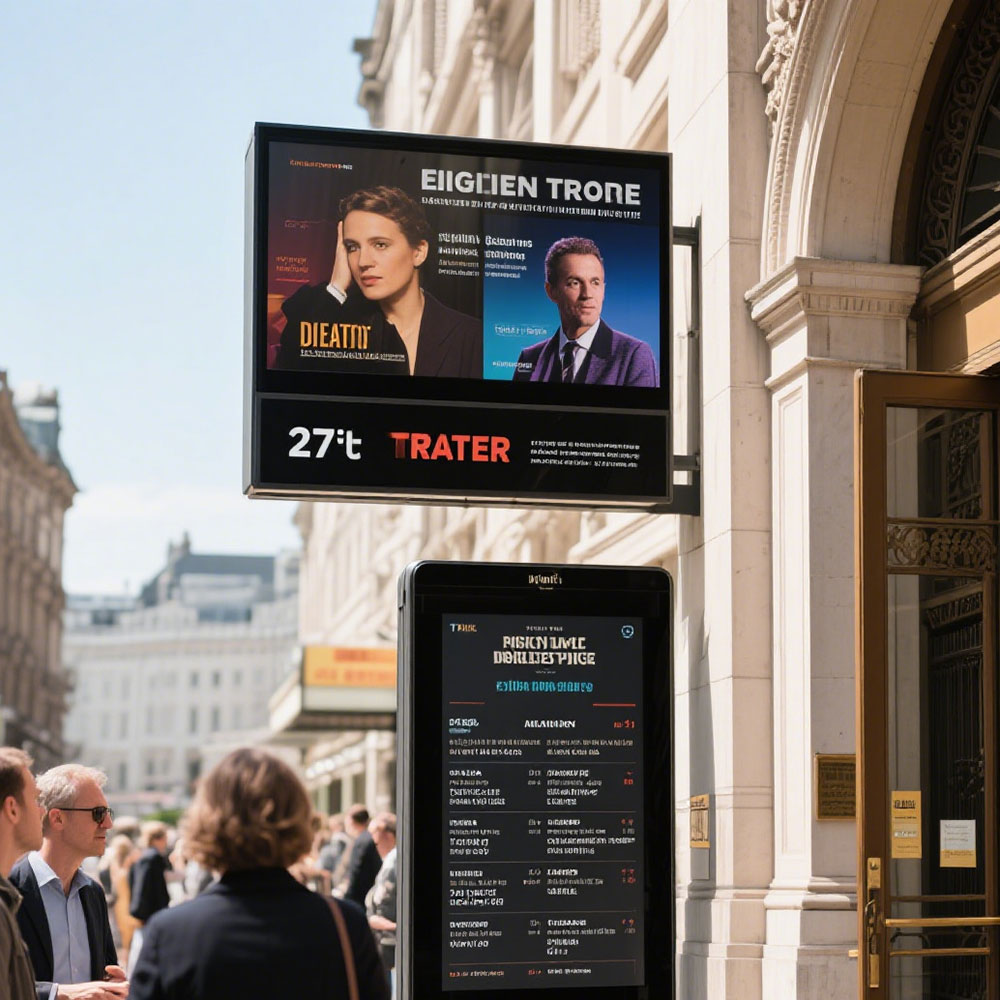In recent years, outdoor LCD screen technology has evolved from a niche display solution into a critical component of smart city infrastructure, public information systems, and commercial advertising. As cities grow denser and digital transformation accelerates, the demand for high-brightness, weather-resistant, and energy-efficient displays has surged—driving innovation in materials, power management, and installation design. This article explores the technical foundations, real-world applications, and future directions of outdoor LCD screens, drawing on industry standards (such as IP65/68 ratings, ANSI/IES LM-79 photometric testing), case studies from major urban deployments (e.g., Times Square, Tokyo’s Shibuya Crossing), and engineering best practices developed over two decades of field experience.
Brightness and Visibility Under Extreme Conditions
A core challenge in outdoor LCD deployment is maintaining readability under direct sunlight. While indoor LCDs typically operate at 200–300 nits, outdoor screens must exceed 5,000 nits to remain visible in full daylight. This is achieved through advanced backlighting technologies like LED edge-lit or direct-lit arrays with local dimming zones. For example, Philips’ “Sunlight Readable” panels use a combination of high-efficiency LEDs and anti-glare coatings to boost peak brightness while reducing power consumption by up to 30% compared to older CCFL-based models. In addition, manufacturers now integrate ambient light sensors that dynamically adjust brightness based on environmental conditions—a feature critical for both energy savings and user comfort. According to a 2023 study by the Society for Information Display (SID), adaptive brightness control can reduce annual electricity costs by up to $1,200 per screen in temperate climates.
Environmental Protection and Durability Standards

Outdoor screens are exposed to temperature extremes (-40°C to +60°C), humidity (up to 95% RH), UV radiation, rain, and even salt spray in coastal areas. To ensure long-term reliability, modern outdoor LCDs comply with IP65/IP68 ingress protection standards, meaning they are dust-tight and protected against water jets or temporary immersion. The International Electrotechnical Commission (IEC) certifies these ratings through rigorous testing protocols, including sand exposure, condensation cycles, and vibration resistance. Additionally, thermal management remains a key concern: passive heat sinks, forced-air cooling systems, and phase-change materials are commonly used to prevent overheating during summer peaks. A notable example is Samsung’s “Weatherproof OLED” series, which employs a sealed aluminum frame and a vapor barrier coating to maintain performance in sub-zero temperatures—an innovation validated by the U.S. Department of Energy’s Building Technologies Office in 2022.

Installation Design and Structural Integration
Proper mounting and structural support are often overlooked but vital for safety and longevity. Outdoor LCDs are typically installed using stainless steel frames, powder-coated aluminum trusses, or cantilevered brackets designed for wind load resistance (per ASCE 7-22 standards). In high-wind regions such as Miami or Shanghai, engineers must account for dynamic pressure coefficients and perform finite element analysis (FEA) simulations before finalizing designs. Moreover, cable management systems—including waterproof junction boxes and fiber-optic data transmission—are essential to avoid signal degradation and vandalism risks. The City of Singapore’s Smart Nation Initiative successfully deployed over 1,200 outdoor digital signage units across bus stops and parks, each featuring modular enclosures that allow quick panel replacement without disrupting service—a strategy now widely adopted globally.
Content Management and Remote Monitoring
Effective content delivery requires robust software platforms capable of scheduling, updating, and analyzing viewer engagement. Leading vendors like Daktronics, LG Signage, and NEC offer cloud-based Content Management Systems (CMS) that support multiple formats (MP4, JPEG, HTML5) and enable real-time analytics via APIs. These systems also integrate with IoT sensors for remote diagnostics—detecting issues like pixel failure, fan malfunction, or temperature anomalies before they lead to downtime. For instance, a pilot project in London’s West End saw a 40% reduction in maintenance calls after implementing predictive monitoring algorithms powered by machine learning models trained on historical failure data from over 500 screens.
Applications Across Industries
The versatility of outdoor LCDs makes them indispensable in sectors ranging from transportation to retail. In transit hubs like Hong Kong’s MTR stations, large-format screens provide live train schedules, emergency alerts, and targeted ads—all synchronized via centralized control rooms. Retail chains such as Walmart and IKEA use outdoor LCDs for promotional campaigns, leveraging geofencing and facial recognition to tailor messages to demographic profiles in real time. Meanwhile, public health initiatives have embraced digital signage during the pandemic; in New York City, over 200 screens displayed vaccination reminders







